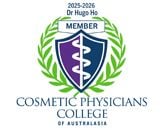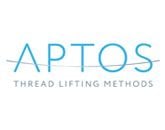A Disadvantage of a Thread lift
)
Facial thread lifts has been around for over 20 years, but has just began to gain recognition in the cosmetic industry. One major disadvantage is simply not choosing thing the right thread material for your thread lift procedure. However, understanding thread lift treatment can be complicated, as there are different types of threads at different prices and they are not all equal.Using the incorrect material may not give you the result that you expect.
There are 3 main characteristics for threads:
ABSORPTION
When a thread is "absorbable" it means that over time the thread will break down and be absorbed into the body. All thread materials have traditionally been used as surgical stitches.
Aptos threads are made from PLLA (Poly L Lactic Acid) and PCL (Polycaprolactone), which dissolves in 18-24 months after the treatment.
Silhouette Soft threads use PLLA only and lasts around 12 months.
MINT threads and Korean threads use PDO (Polydioxanone) and are absorbed in 3-6 months after treatment.
NEOCOLLAGENESIS
Because the threads stimulate collagen production, choosing a thread with a longer lifetime can be beneficial. However, the ability to stimulate collagen production also differs.
PLLA materials can stimulate a lot of collagen but only a small amount of elastin. Collagen gives the skin it's structural support and elastin gives the skin its elasticity and firmness.
PCL can stimulate a wider area of rejuvenation and produce the most amount of elastin.
PDO causes a minimal inflammation that gives the skin a short term firmer look but can stimulate only a small amount of collagen.
SURFACE TEXTURE
The texture of threads is crucial for achieving effective results.
Multiple barbs on the thread unite in number, e.g., Aptos thread has 4 barbs per 1 cm of thread, ensuring the thread fixes to the tissue and doesn't move. Barbs also cause small abrasions in the tissues, stimulating the skin to produce collagen. Barbs can be arranged in one direction (unidirectional), 2 directions (bidirectional) or face each other in pairs in multiple directions (multidirectional). Instead of barbs, Silhouette Soft threads have a knot and cone system. The claim that these can provide a stronger hold on the tissue has not been proven.
Smooth threads are used in regions with thin tissue, such as around the eyes, where you don't want the skin to scrunch up on the surface. Some threads are wound spirally into coil springs to provide flexibility for muscular movements.
Threads used for treatment will be determined by individual preference, the location of the procedure, the desired length of effect, and affordability.
) Author:Dr Hugo Ho (AHPRA Registration: MED0001158440)
Author:Dr Hugo Ho (AHPRA Registration: MED0001158440)

)
)
)
)
)

